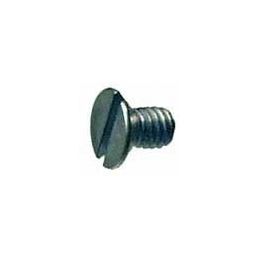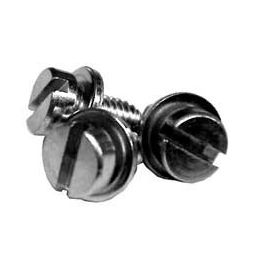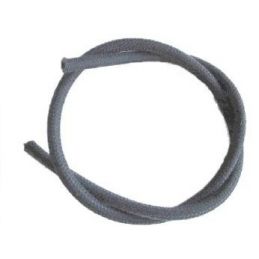Dry Sump Vs. Wet Sump
-Written by Steve Phillips for Hot VWs magazine-
In this article, I'll be discussing two different types of oiling systems: wet sump and dry sump. What are they? What do they do? Which one is best for me?
Let's start with the wet sump. What does it mean to have a wet sump? It means that we store the oil capacity in the bottom of the engine. This is how most stock engines operate. It works by having the oil sit in the bottom of the engine and when the engine is running, the oil pump picks up that oil and pumps it to where it is needed. The oil, then, runs out of the different areas it was pumped to and gravity feeds it back into the bottom. Pretty simple and sounds pretty good, right? As far as the motor goes, here is what's really going on inside the system. The crank is spinning around and whipping the oil. It's similar to when you're cooking and have a bowl of whatever liquid and are stirring it. If you pick up the speed, you will notice that liquid starts getting air bubbles in it and if you really pick up the speed, your liquid will be all over the kitchen. This is the same sequence of events that is happening in your motor. This effect is called windage.
Like in the example, the more RPMs, the more oil that gets thrown all over. The negative effects of windage are foam and aeration of the oil. The crank and parts are spinning in all of this oil which robs it of horse power. Good news, wet sumps are cheap and they even come stock! Now, the big question you might be asking yourself, does this work for what I'm doing? My opinion is this: For a street car/daily driver? Yes. There is no reason to go to a dry sump system. Even most drag cars, off road cars, etc... can use this type of system. This system is alright for most cars, so why even think about a dry sump? Read on my friends.
When it comes to dry sump, they can be fairly complicated systems. Reason being this is a system that pumps all the oil out of the engine, into a tank, then back out of the tank and into the motor. It takes at least two oil pumps that are usually stacked together. What the heck? Really? Why would anyone need/want that? Keep in mind all the oil that ends up in the bottom of the engine or where ever there is a pickup line gets sucked out and put into a tank. This tank (true dry sump tank) has a design to it that gets rid of air bubbles and foaming. Most of the time the tanks are round and the inlet line comes into the tank on the edge, causing the oil to hit the side of the round tank, spinning the oil. As the oil falls, it goes though baffles which furthers the process of getting the air out of the oil. Pretty cool, huh? Now, one of the oil pumps that is stacked pulls oil out of the bottom of the tank and pumps it into the motor. This means all the parts in the motor that are moving are not moving in a bath of oil. No windage, no loss of horsepower and a big factor is that the pickup is in the oil tank, not the bottom of the engine. If you have a high RPM engine, this is a good thing. My opinion, if you have a sand rail, auto cross or roundy-round race car, these are all applications where you might want to consider trying out a dry sump system.
Let's go through some scenarios to see which one is right for you and what your options are. When it comes to drag cars, on a stock or “stock-ish” engine case, the oil pickup is on the bottom and in the middle. When a drag car takes off, all that oil sloshes toward the rear of the motor. This is usually okay since the pickup is in the middle and will still be covered in oil. What tends to happen is the oil is sucked up and distributed throughout the motor and it takes time for the oil to drain back down to the bottom. This time lapse can leave the oil pickup dry (no oil there to pick up). What happens when we cross the finish line? We hit the brakes, maybe a parachute, then all the oil that has gravitated back towards the bottom, goes sloshing towards the flywheel. The resolution for this is a wet sump system and bolt on a big, deep sump. With this application, there is so much oil in the bottom it doesn't have time to run out of oil. I usually use a 3.5 quart sump. Your other option is to dry sump the motor.
Sand rails can be a bit more complicated. As I said earlier, a deep sump will cure the above referenced issue (most of the time), on a wet sump, but these deep sumps hang down and more than likely, you will bottom it out on something and run the risk of ripping it off of the motor. Because of this, most off-road cars can't have a deep sump. The stock sump (part of the engine block) is rarely level. This can be a big problem. Oil can end up in one valve cover and not where the oil pickup tube is. If you're going to stick with a wet sump system, you should look into something called an Accusump. Get the 2 quart one. If you need more information on that, check out my article, “Oil starvation in ORV”. The other cure, dry sump.
Now, let's get into those roundy-round cars or autocross. On these types of cars, you really should run a dry sump. Keep in mind that a wet sump uses gravity to return the oil back to the bottom of the engine. In a roundy-round car, all your oil is going to end up in the outside valve cover as the G-force is going to push it there. On an autocross car, you're making hard lefts and you're making hard rights. The oil will never have a chance to settle in the bottom. There really isn't a good wet sump option here.
If the dry sump is so good, why not just put them on everything? One of the biggest reasons is because they are not cheap. To do it right, you're going to spend anywhere from $1,500 to $3,000. “Yeah, but you pick up horse power by reducing windage!” True, but it also takes horse power to turn the multiple pumps. So, it's a wash. In other words, what you gain in horsepower, you lose in driving the pumps. I help a lot of people with their drag cars and 90% of them are wet sump systems with deep sumps. On the off road cars, I see 50% wet sump with some that use an Accusump. For the sand rail guys that like to side hill, I have found it's better to go to a dry sump. The roundy-round and auto cross cars, dry sumps are really the only good option. My dragsters use a 4 stage dry sump. I have two pickups on the bottom of the engine and one pickup in one of the heads. Works well, but dang my wallet sure is a lot lighter.







